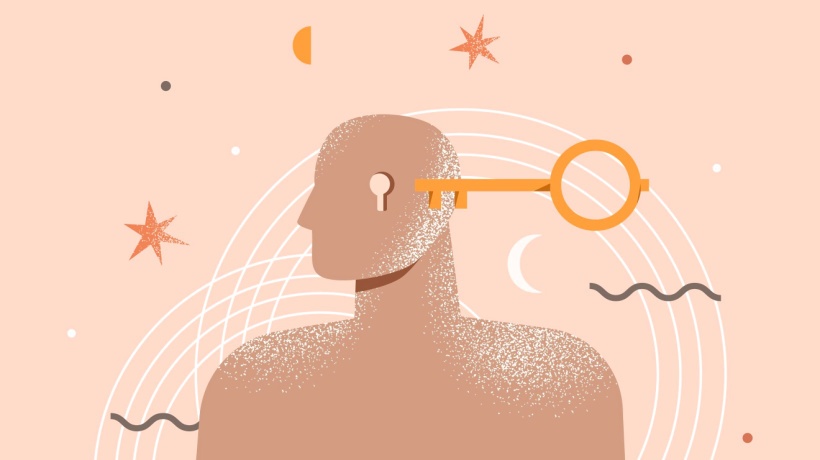4 Topics To Humanize Your Online Learning Design
One of the goals of online learning design is to create an environment that promotes action and drives change. Inspiring that change requires examining the entire learner in aspects like design thinking, cognitive load, learning science, learner engagement, scenario-based learning, and much more. Yet, some design actions or strategies can cause anxiety and fear in learners. In that sense, emergent and empathetic Instructional Designers must genuinely design learning that keeps the learners engaged and challenged in a healthy, supported learning environment. So, with the audience in mind, what design-informed principles are needed to create a healthy, safe, engaged, and challenging learning experience?
Designing mindful online learning experiences respects the learners' needs through an equitable, diverse, and inclusive lens. From that lens, consider the following 4 topics as you approach your design:
- Empathize through a design thinking-informed lens
- Prioritize for impact to reduce cognitive load
- Engage your learners using pedagogically neutral interactivities
- Humanize your design with storytelling and scenario-based learning
1. Empathize Through A Design Thinking-Informed Lens
When we talk about design thinking, we refer to the five steps in the process: empathize, define, ideate, prototype, and test. Design thinking is a human-centered process. It places great value on empathy for the designers to influence their creations through continuous testing and prototyping. Before you dig deeper into the design process, consider the learners' audience analysis. For example, the learners' characteristics and learning science play a vital role in determining the direction and format of the learning product. There are many considerations, but some are listed below:
- Ensure that any information you want learners to perceive is both detectable and accessible. Give your learners control over audiovisual media presented in different formats. For example, choose contrasting colors, provide text to audio, and use screen readers.
- Motivate learners in your design. For example, use the components in Keller's ARCS model of motivation to structure and design instruction.
- Refrain from overloading working memory in your design. Instead, think of the science of learning in your design as it draws from many disciplines, such as cognitive neuroscience, learning analytics, educational psychology, and emotion education (fostering social-emotional learning, or SEL, competencies).
2. Prioritize For Impact To Reduce Cognitive Load
As you design, prioritize for impact and focus on "need-to-have" content. Consider the following:
- Avoid a design that triggers a cognitive load. Research and science have found that learners can absorb and retain information effectively only if it is provided in a way that does not "overload" their mental capacity. For example, online learning content is powerful when focusing on one idea or topic.
- Make your writing concise. For example, reduce unnecessary words, punctuation, complex sentences, etc., to make the writing as clear and crisp as possible. To keep your learners focused, use simple words and short sentences to hold their attention.
- Select images and icons to visualize your design and reduce text load. The human brain is accustomed to visual patterns, not to text. When you use icons to describe your message, you provide a faster way of absorbing information and a higher chance of retaining it for longer. Be sensitive by choosing diverse and culturally respectful images.
3. Engage Your Learners Using Pedagogically Neutral Interactivities
One of the ways to motivate and engage your learners is by integrating interactive technologies without ignoring the pedagogy of learning design. Gamification is one example of engaging online learners. Gamified online learning comes in many forms, starting with the "hook" and ending with the "reward." Models of gamification use stories, visual design, healthy competitions/challenges, and feedback.
According to Chomsky, interactive technologies used in social media platforms can be pedagogically neutral because they serve various needs and purposes. [1] However, online learning design and education are different. Like the "wagon" a kid pushes with their toys arriving at a party, Instructional Designers and/or Subject Matter Experts (SMEs) come with their own experiences, philosophies, passions, values, beliefs, and assumptions embedded into the technology revealed through the pedagogy when learners use the technology. As a result, the learning design will be biased and/or create inequitable opportunities for learning.
As a mindful and inclusive Instructional Designer, evaluate the technology you will use to avoid bias when choosing interactive technologies. For example, use the SAMR model as a start.
4. Humanize Your Design With Storytelling And Scenario-Based Learning
Storytelling and scenario-based learning (SBL) are robust learning designs that create meaning so learners do tasks purposefully. They are meant to add joy, provoke thought, and drive action in online learning experiences. Examples of visual storytelling and scenario-based learning tools are infographics, branched scenarios, story cards, videos, articles, simulations, or VR and AR.
Telling a story lies in the message you're passing on to your learners. Following are some tips:
- Articulate a clear purpose for your message upfront. For example, consider "What's In It For Me" (WIIFM) up front and throughout by answering three questions: What is it about? Who is it for? Why is it important?
- Capture and sustain your learners' attention with a strong opening. For example, an intriguing headline, attention-grabbing first line, quote, or thought-provoking essential question.
- Make your story relatable and memorable by using humor if/where appropriate to boost mood and embedding little "aha" moments to activate interest.
Character-driven/branched scenarios and case studies are examples of scenario-based learning. Embed virtual field trips, scavenger hunts, role-play, and gamification as examples in SBL-informed design.
Conclusion: Rethinking Online Learning Design
Online learning design should be current and relatable to our world. During times of uncertainty and disruption, new skills require us to upskill our existing Instructional Design competencies. Likewise, new skills become in demand to humanize online learning through a mindset that takes us from surviving to thriving in any learning environment.
In conclusion, bring life to online learning by designing instructions powered by the following examples:
- Fostering land and nature-based learning through outdoor experiential education and sustainability design.
- Inviting guest speakers and using social learning activities.
- Bringing the "surprise" factor to the design, which stimulates the learners' curiosity and enhances their critical thinking.








